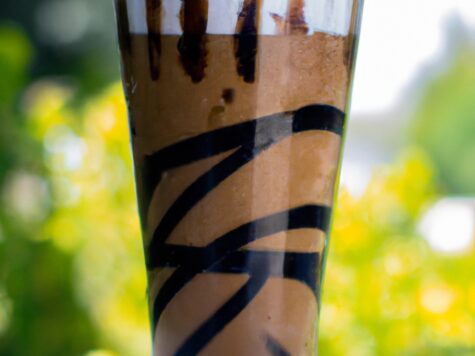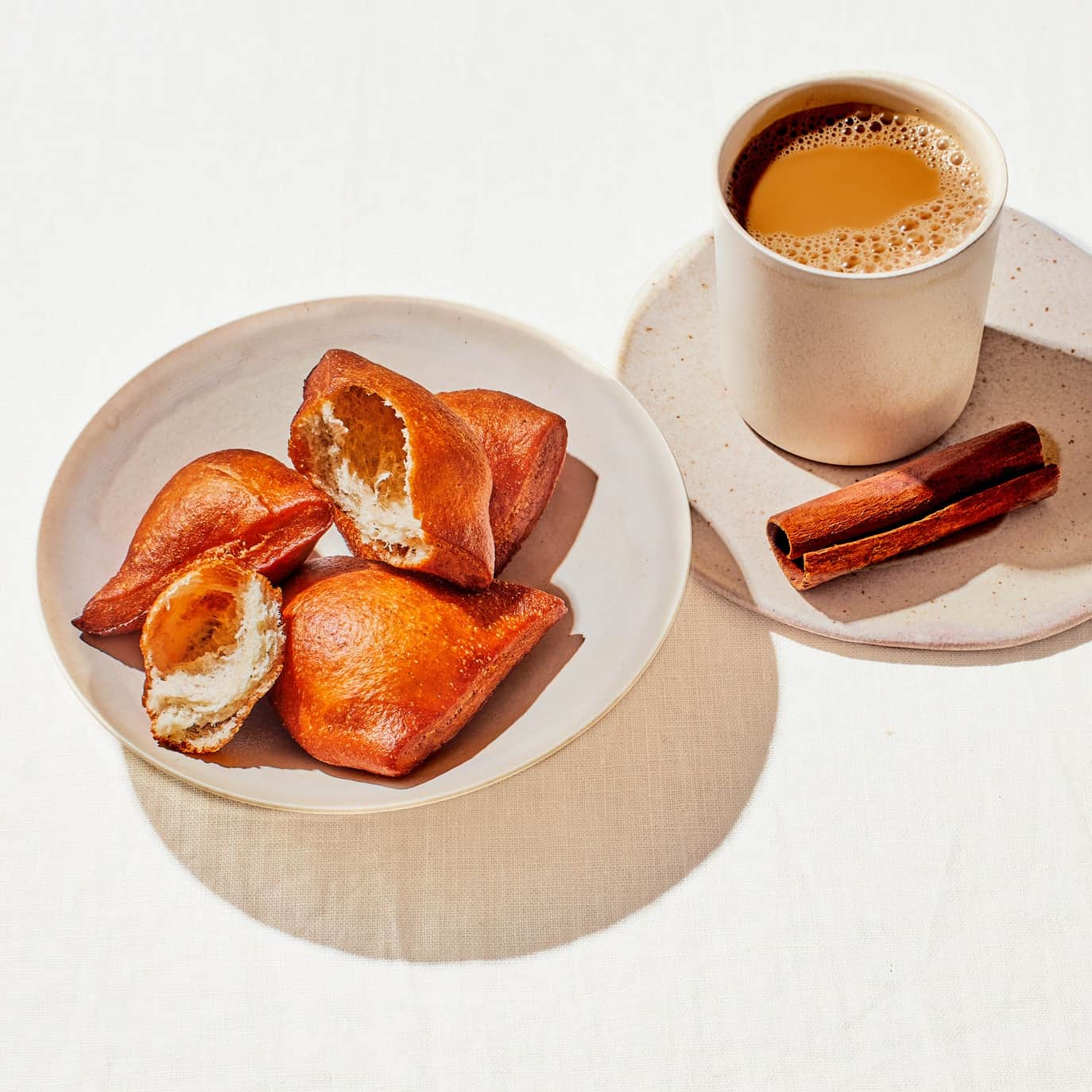This is Highly Recommend, a column dedicated to our very opinionated editors’ favorite things to eat, drink, and buy.
Most visitors to artist Olafur Eliasson’s blockbuster retrospective at the Tate Modern in London are there for, well, the art. I too bought tickets weeks ahead of my trip to witness the experiential installations by an artist who famously dragged 12 icebergs from Greenland to Paris as a statement about climate change. While there, I waded through a room thick with fog that rendered me color-blind and a kaleidoscope-like tunnel that seemed to compress and contour the space around me. At the very end of the show, however, I noticed a sign pointing to what turned out to be my favorite moment in the whole exhibition: lunch.
The fog! (Possible inspo for carrot soup?)
PHOTO BY ALLIE WISTDownstairs, at the Tate Modern’s terrace bar, was a five-course tasting menu featuring funky local cider, rich and salty focaccia, a cumin-forward hummus, and more. Jon Atashroo, the head chef at Tate Modern, spent a week at Studio Olafur Eliasson (SOE) Kitchen in Berlin to develop a menu in response to Eliasson’s research. (It’s available until the exhibition closes on January 5, 2020.)
Artist Olafur Eliasson turns his climate-focused art into a tasting menu.
Photo by Allie WistThe dishes highlight organic and sustainably sourced vegetables and fermented and cured ingredients, which theoretically help reduce reliance on shipping and minimize the lunch’s CO2 emissions. Butter, for example, is replaced by homemade labneh, and local rapeseed oil is used in place of imported olive oil. Each dish is annotated with its carbon footprint. A velvety carrot soup topped with a preserved-lemon-and-almond crunch: 257 g CO2e. A smoky, sweet red pepper dip: 45 g CO2e. A courgette (a.k.a. zucchini) salad with sour grapefruit, mint leaves, and nuts: 38 g CO2e. The dishes were sustainable, and yet still indulgent, bright and unexpected—not unlike some of the artist’s installations themselves.
Talking about climate change can be bleak and, at its worse, preachy. But at the Tate Modern, that conversation is neither of those things. Instead, it’s delicious.




